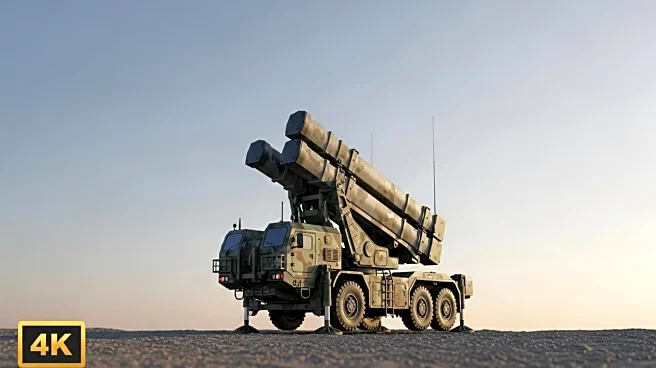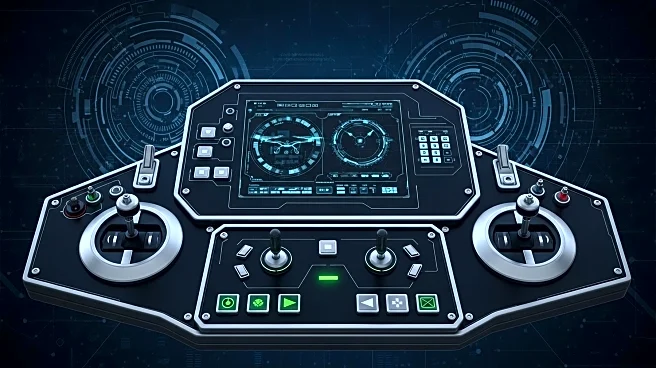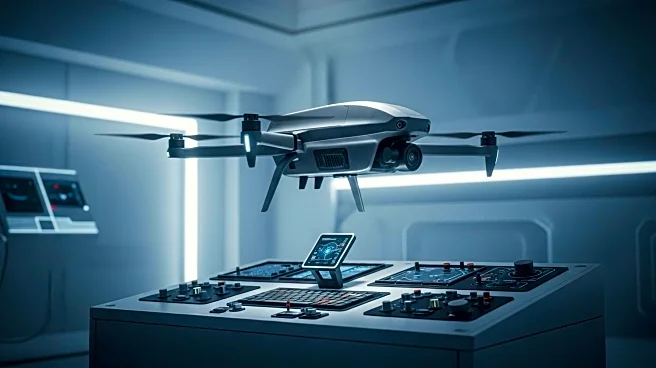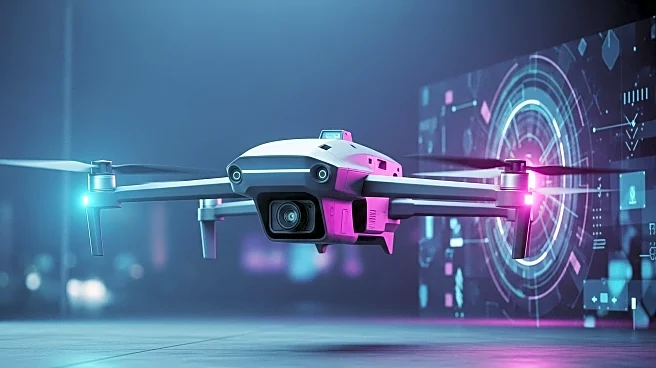What's Happening?
Lockheed Martin's Skunk Works has introduced a new stealthy, uncrewed combat aircraft design named Vectis, aimed at both U.S. and international customers. The Vectis is designed to perform air-to-air, air-to-surface, and surveillance missions alongside crewed aircraft. This development builds on Skunk Works' previous work on the U.S. Air Force's sixth-generation fighter and the RQ-170 low-observable uncrewed aircraft vehicle. O.J. Sanchez, vice president and general manager of Skunk Works, emphasized that the Vectis program is focused on delivering integrated capabilities at a competitive speed and price. The aircraft is expected to fly within two years and is being positioned as a highly survivable platform, potentially aligning with the U.S. Air Force's requirements for its Collaborative Combat Aircraft (CCA) program.
Why It's Important?
The introduction of the Vectis aircraft represents a significant advancement in military aviation technology, particularly in the realm of uncrewed combat systems. This development could enhance the operational capabilities of the U.S. Air Force and potentially other international military forces by providing a flexible and survivable platform for various missions. The Vectis design's emphasis on survivability and flexibility could make it a valuable asset in modern warfare, where the integration of crewed and uncrewed systems is increasingly important. Additionally, the aircraft's potential applicability to the U.S. Navy and international partners suggests a broad market appeal, which could have economic implications for Lockheed Martin and its stakeholders.
What's Next?
As the U.S. Air Force continues to define its requirements for the next phase of its CCA program, the Vectis aircraft could become a strong candidate if a highly survivable platform is deemed necessary. Skunk Works is also positioning the Vectis for potential use by the U.S. Navy and international partners, which could lead to further development and deployment opportunities. The aircraft's design flexibility allows for adaptation to various mission needs, which could attract interest from multiple countries and programs. The ongoing evolution of operational analysis and design tactics will likely influence the future trajectory of the Vectis program.
Beyond the Headlines
The Vectis program highlights a shift in Skunk Works' approach to uncrewed combat aircraft, moving from viewing them as expendable assets to reusable, highly survivable platforms. This change reflects broader trends in military strategy, where the integration of advanced technologies and flexible mission capabilities is becoming increasingly critical. The program's alignment with government-reference architecture for mission systems integration underscores the importance of interoperability and adaptability in modern defense systems.











